Syn.: Cuscuta tetrandra Moench, Cuscuta vulgaris Pers.
Family: Convolvulaceae Juss.
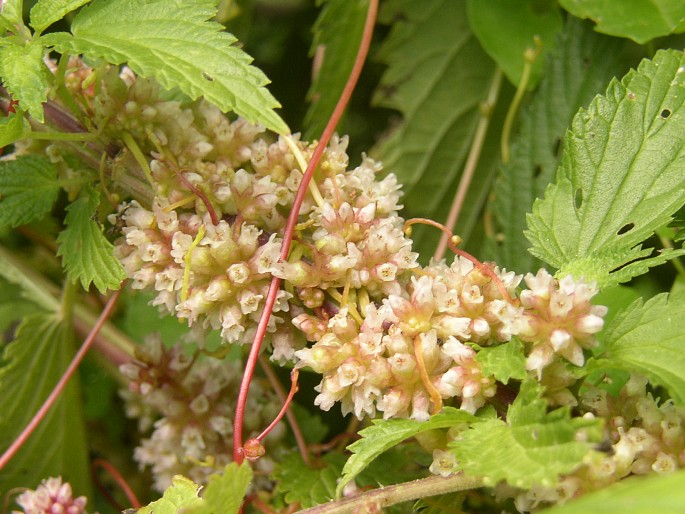
Distribution: Eurasian species ranging from Western Europe through European Russia, Siberia, Central Asia to China and the Russian Far East. It was introduced to the eastern coast of North America and to Australia.
Ecology: Grows in littoral vegetation and wet forest margins, ditches, on streamsides, along roads and in rubble, usually on the Common Nettle (Urtica dioica) but also on many other hosts. It blooms from August to October.
Description: Herbaceous parasite, usually annual. Stem twining, up to 150 cm long, much branched, yellowish to reddish, with haustoria, leaves reduced to scales. Inflorescence dense, 10–25-flowered, flowers mostly tetramerous, small, 3–4 mm in diameter, calyx obconical, calyx-lobes obtuse, not longer than tube, corolla campanulate, white, yellowish or reddish. The fruit is an ovoid capsule.
Note: The genus Cuscuta contains about 170 species which occur mainly in North and South America, several species also in Asia and Europe.
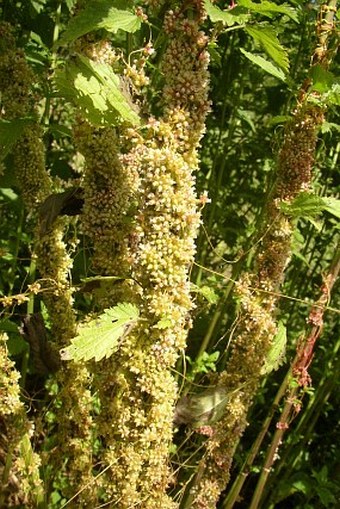
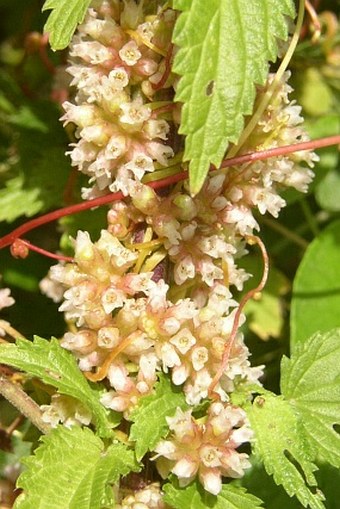
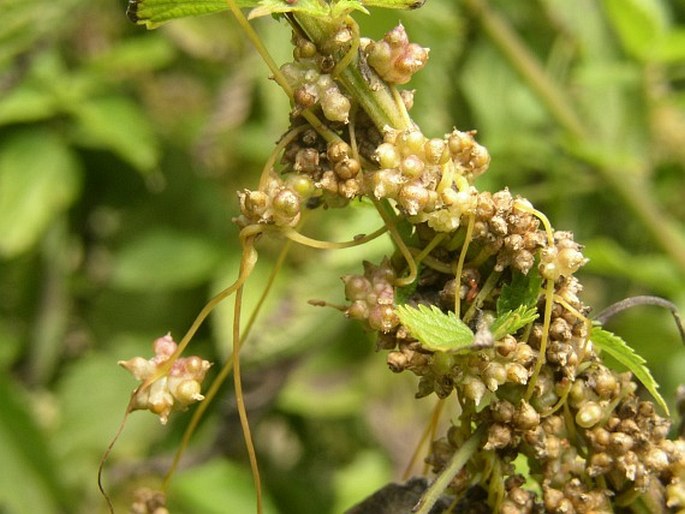
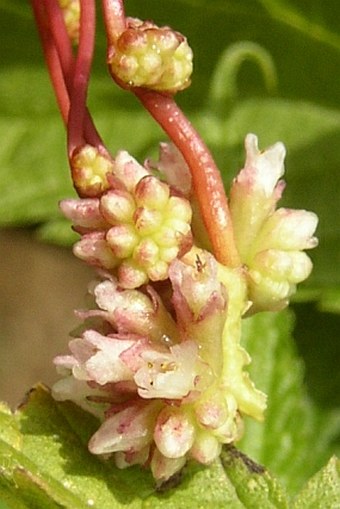
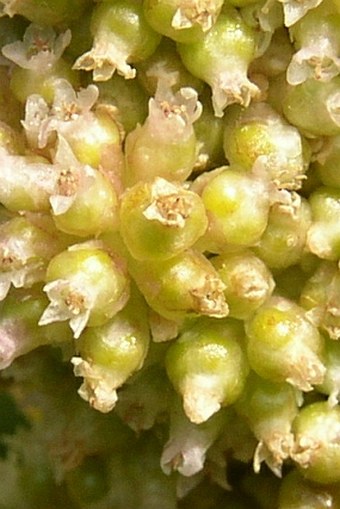
These images were taken in Czechia, Moravia, Pouzdřany (August 13, 2006).


